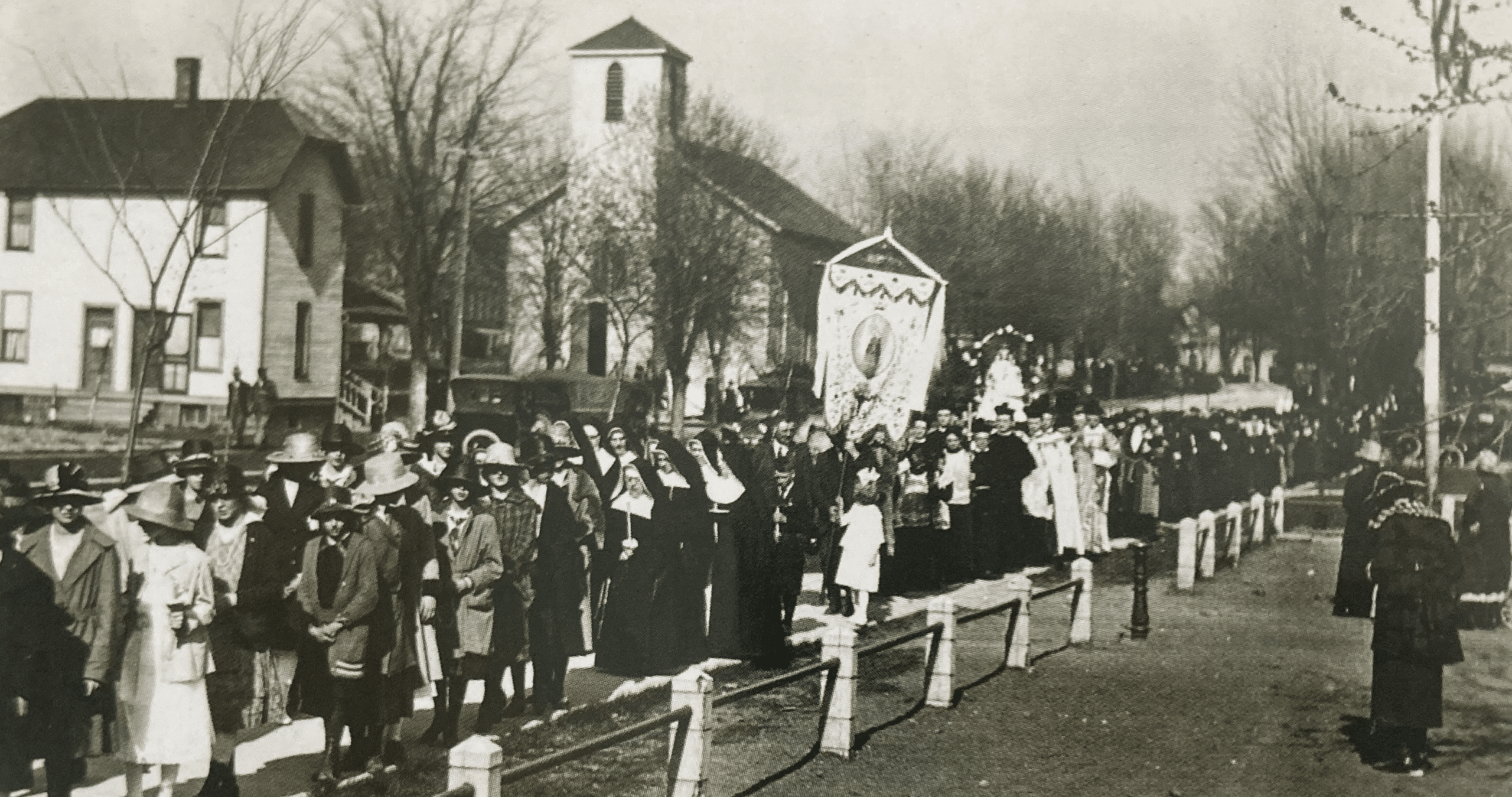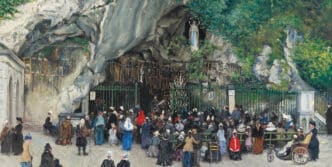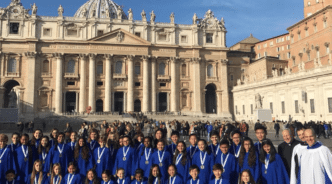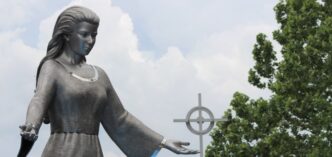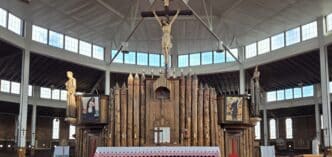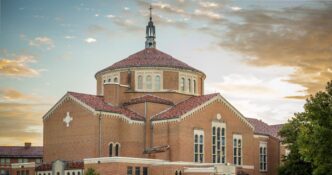On May 24, 1875, more than a thousand people gathered in the tiny Catholic community of Frenchtown, Ohio. Despite heavy storms the night before and rain pouring that morning, they formed a procession and began a 7-mile journey to the village of Carey, walking behind a statue of Our Lady of Consolation that had just arrived all the way from Luxembourg.
That procession would mark a pivotal moment in what is now the Basilica and National Shrine of Our Lady of Consolation in Carey, a place known for healing, peace and prayer. But at the center of the shrine is not just a statue — it is Mary herself, the mother of Jesus, to whom generations of pilgrims have turned as a source of intercession, comfort and strength.
“People feel they can turn to Mary,” said Brother Randy Kin, the shrine’s minister of hospitality. “Sometimes God can feel distant or far away, but Mary lived here on earth. She understands our struggles. She watched her son suffer. There’s comfort in the care of a woman, someone watching over you, offering maternal love and protection.”
A procession of faith
The statue that inspired the 1875 pilgrimage was commissioned by Father Joseph Gloden, who served the Catholic communities in Frenchtown and Carey. While visiting family in Luxembourg, a member of the parish arranged for it to be crafted as a faithful replica of the ancient statue venerated in the Cathedral of Luxembourg. Carved from oak in the traditional style, it was clothed in fine fabrics and adorned with jewels — not as mere decoration, but as a sincere offering of devotion.
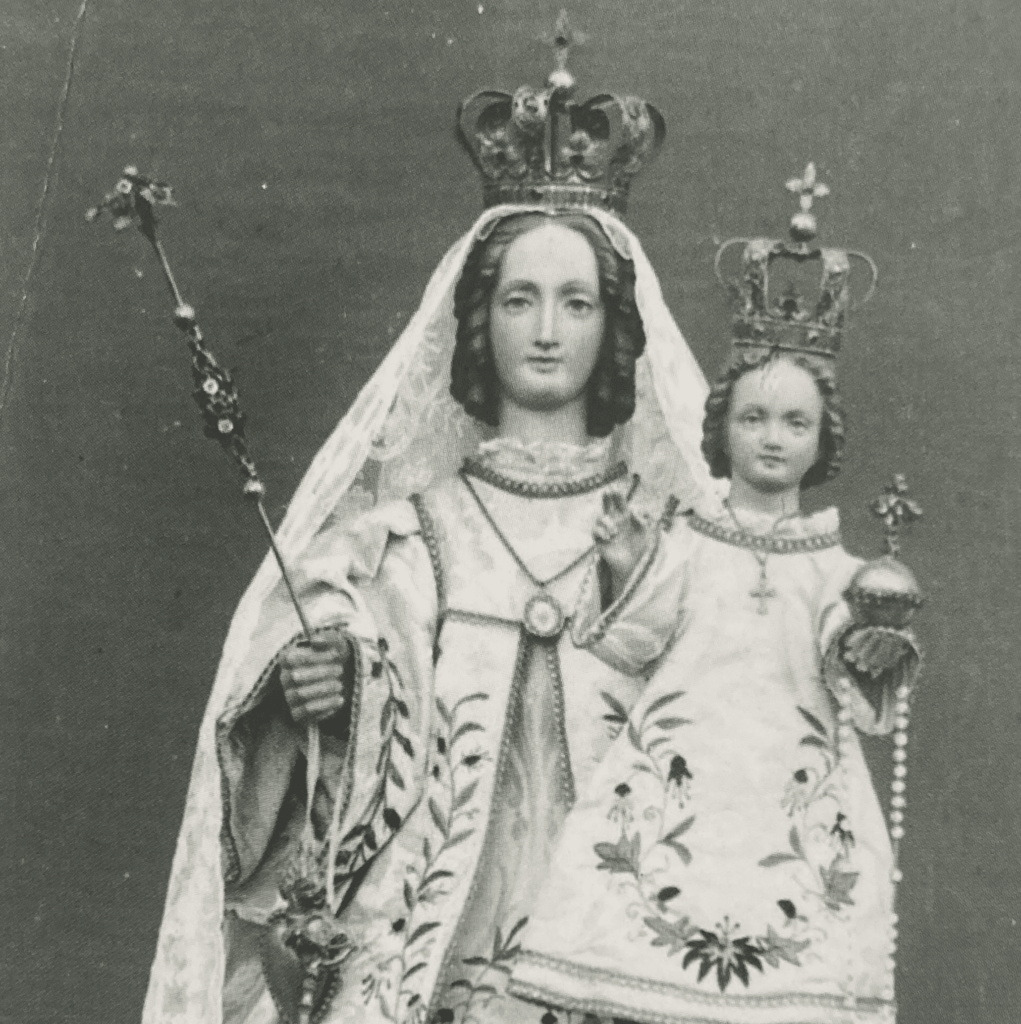
When the statue arrived in Ohio in early spring that year, the parishioners in Frenchtown asked for the honor of carrying it to Carey, where it would be enshrined in the village’s recently built Catholic church. Father Gloden was hesitant as Carey had a large Protestant population, and he worried the public demonstration might provoke backlash. But after seeking counsel from nearby priests, he agreed.
The morning of the procession was wet and stormy. “For a moment I had decided not to let the procession proceed,” Father Gloden later wrote in a letter to Bishop Joseph Schrembs. But at the appointed time, umbrellas opened and the faithful set out, walking together in hope.
Then, something remarkable happened.
As soon as the statue was carried from the church in Frenchtown, the clouds broke. “The sun pierced the clouds and was shining on the whole line of the procession,” he recalled. Though thunder and lightning remained on both sides of their path, the pilgrims walked dry. It wasn’t until they placed the statue on the altar in Carey that the skies opened up again — this time with a downpour. No one in the procession got wet.
That event became known as the “Miracle of the Rain,” the first of many graces that pilgrims to Carey would attribute to Mary’s presence and intercession.
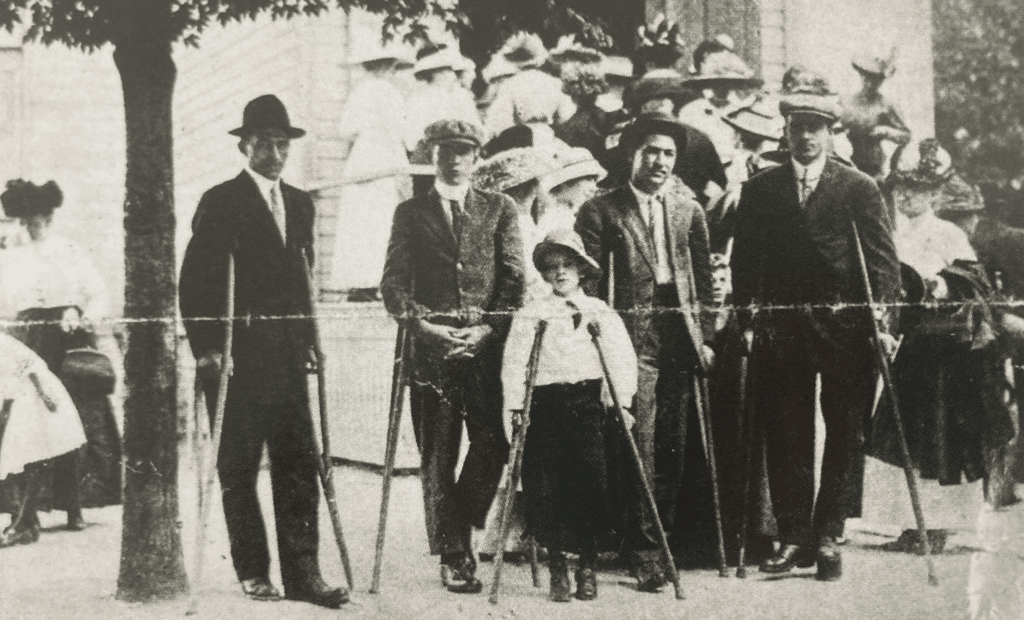
A mother to whom we turn
Devotion to Our Lady of Consolation quickly spread, and by the early 1900s, so many pilgrims were coming to Carey that the original wooden church building was moved and a larger church was built. The statue of Our Lady of Consolation was enshrined in a new red-brick Romanesque church completed in 1924 and designated a basilica in 1971.
“What makes this statue truly special isn’t its material worth — you could always make another replica,” said Brother Randy. “It’s the spiritual significance tied to it. This is the statue connected to the ‘Miracle of the Rain’ and to the many other miracles people have experienced here through Mary’s intercession.”
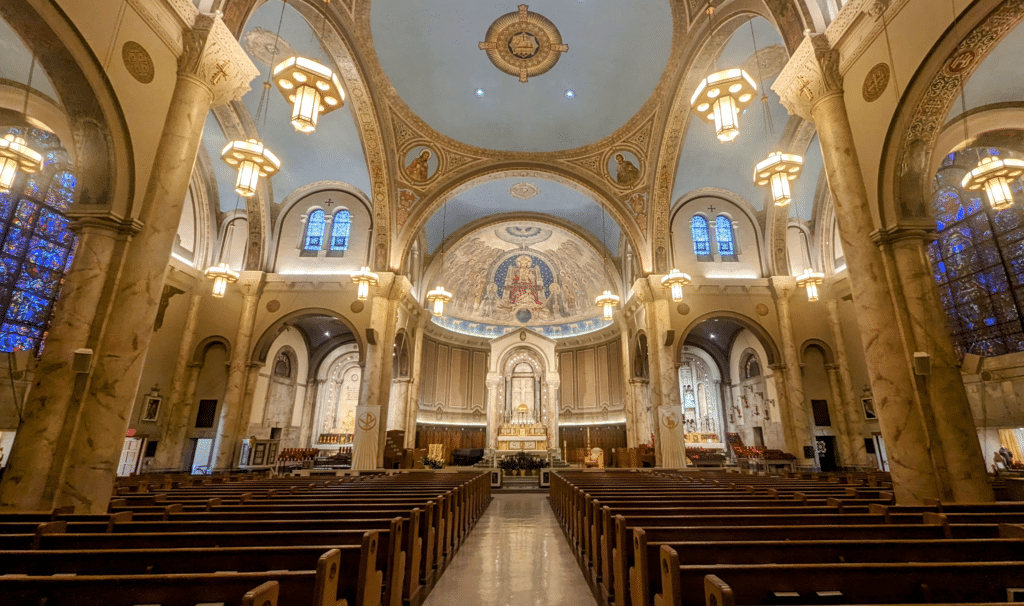
From the very beginning, people turned to Mary not only for miracles, but for consolation. One early story tells of Leo, a Belgian immigrant farmer whose young daughter, Eugenie, had been gravely ill for weeks. When the 1875 procession passed him near Carey, he fell to his knees and begged Our Lady to heal his child. Returning home that night, he found her eating her first meal in nearly a month, completely healed.
These stories, passed down through generations, aren’t just history to those who visit the shrine; they are part of a living tradition.
“People come here to pray for their family members battling cancer, for a job, for peace in their homes,” Brother Randy said. “But more than anything, they come because they believe Mary hears them — and brings their petitions to Christ.”
Inside the lower basilica, visitors leave behind crutches, photos, letters and rosaries as silent witnesses to answered prayers. Every day, the faithful light candles, attend Mass and receive blessings, especially during the shrine’s devotions, which include prayers for healing with a relic of the True Cross.
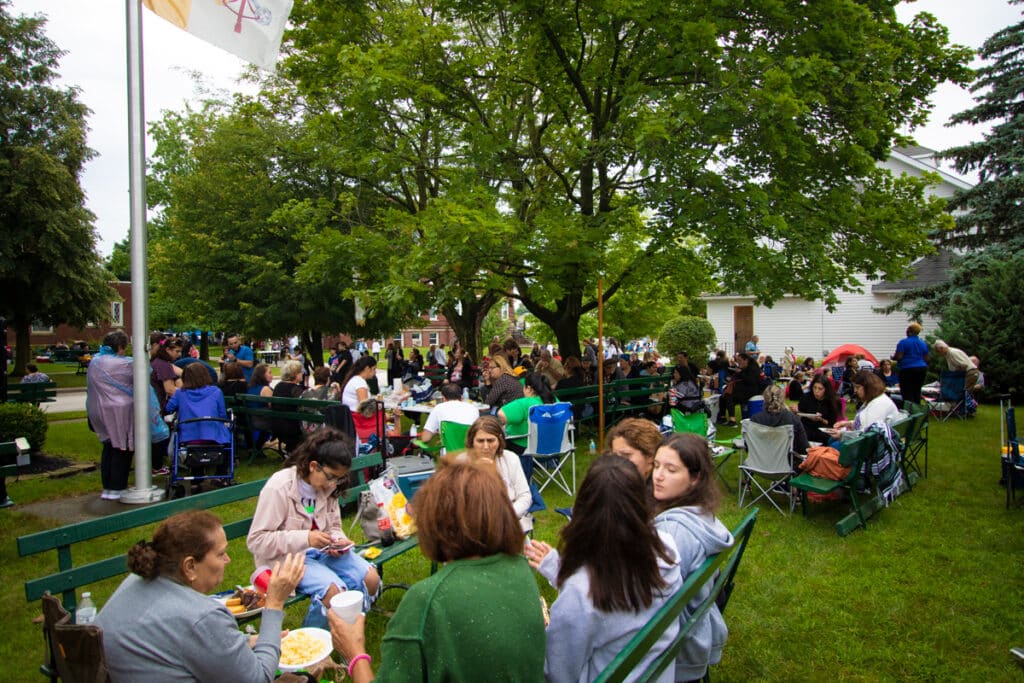
“We talk about this as a journey of faith, hope and healing,” Brother Randy said. “And Mary is central to that. She stood at the foot of the Cross. She knows what it means to suffer. People trust her because she understands, and because they believe she walks with them through it.”
A place set apart
Though small in size, Carey has become a national destination for pilgrims. Designated by the Diocese of Toledo as a site to receive a special indulgence during the Jubilee Year, the Basilica and National Shrine of Our Lady of Consolation continues to draw visitors through its vibrant spiritual life and events — most notably the annual procession reenactment, which was held again May 24, 2025, in celebration of its 150th anniversary. Yet, amid the growth and celebration, the heart of the shrine remains unchanged.
“People find healing here,” Brother Randy said simply. “It’s quiet. It’s humble. And it’s holy.”
In a world often overshadowed by division, anxiety and the threat of war, the message of Our Lady of Consolation is simple yet profound: She is a mother who listens, a comforter who intercedes and a gentle reminder that no one ever walks alone in life.

“We are not yet at the end of our difficulties, and we need a good, loving and powerful comforter,” Brother Randy said, quoting Father Gloden from 1875. He continued, “That’s who Mary is — a source of strength and compassion. That’s why people continue to come to her.”
This content has been brought to you in partnership with the Basilica and National Shrine of Our Lady of Consolation.

